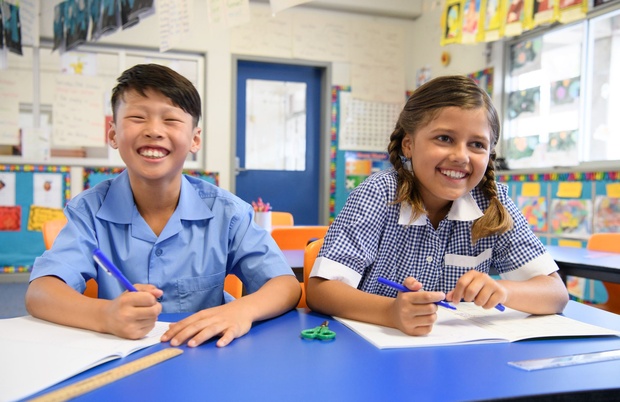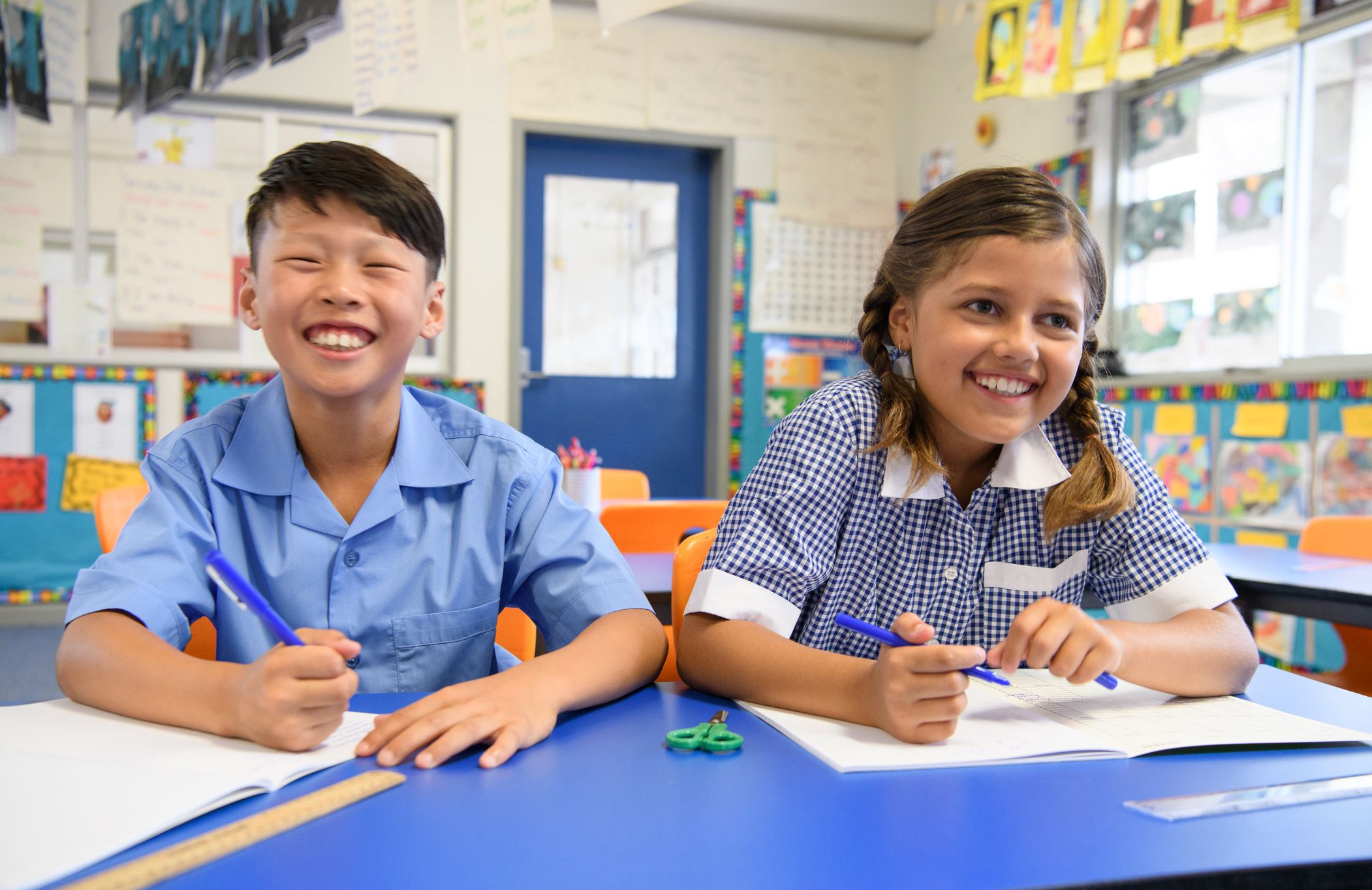Driven by NSWPPA, The Anxiety Project aims to build students’ capacity to “be the boss of their anxiety”, lead child psychologist Michael Hawton tells EducationHQ.
“Because at the moment, I think it’s possibly going the other way.
“We’ve got kids who are not the boss of their anxiety, they’re almost subject to the stressors of life,” he says.
A national survey by the Australian Primary Principals’ Association (APPA) in 2019 revealed growing concern amongst school leaders over increasing rates of anxiety in students, and the demands this was placing on teachers and school resources.
Hawton says fuelling the problem is parents’ apparent unwillingness to allow their children to experience emotional distress without immediately intervening.
“What’s unfortunately happened, I suppose over the last 20 years, is there’s a lot more mums and dads jumping in to fix emotional problems for their children, when kids need practice overcoming that themselves,” the expert explains.
“And if they don’t get the practice, then they grow up somewhat immature in their ability to be able to manage life’s difficulties.”
Resisting ‘sub-optimal’ responses
Teachers and support staff involved in the two-year program receive specialist training in how to recognise anxious behaviour in children, and how to respond in a way that builds their confidence in navigating their way out of uncomfortable emotional states.
Parents too learn how to discard “unhelpful techniques” that might, despite their best intentions, only be worsening anxious feelings and behaviours, Hawton suggests.
“One of the key theoretical frameworks that we use is called ‘internal locus of control’, and if you have a strong internal locus of control, you're able to work out how to manage your own emotions rather than blame circumstances,” he adds.
”And so, what’s going on for a lot of kids is that they’re only possibly half aware that they have some control over how they respond to an event that might be stressful.”
Typically, when a student shows signs of anxiety, teachers will want to rescue them from the distress by reassuring them, showing them exactly what to do, or distracting them, Hawton says.
“Now, all of those are sub-optimal solutions,” he warns.
“If you keep jumping in and fixing the problem for the child, reassuring them, then basically, the child then doesn’t know how to manage small doses of stress on their own.
“So, part of the training of teachers is helping them to be objective, and to not get tripped up by the child’s distress…”
Initial results 'a surprise'
Early findings gleaned by Hilton Educational Research show the program is having significant positive impact in the 113 participating schools.
While there’s been a marked increase in teachers’ confidence and competence to help students manage anxiety (43.8 per cent to 66.4 per cent), the number of students reporting high levels of anxiety has dropped since starting the program (19.6 per cent to 14.6 per cent).
Some 72 per cent of schools involved also showed a decrease in the levels of anxiety in students since commencing.
“One principal said to me, and it was her words, not mine: ‘this could change a generation of children in a terrific way to help them be less anxious’,” Hawton says.
Project lead and NSWPPA vice-president Rob Walker says the findings were quite unexpected.
“What surprised us, part of the project for the adults is removing the accommodations that they’re putting around kids that are not allowing the kids to sit in discomfort and work their own way to a place of resolving the issues that they face,” he begins.
“And so therefore … we expected there would probably initially be an increase in anxiety levels amongst kids, and that their later measures, that we’re still yet to do, would show a reduction in anxiety.
“But in fact, in 34 per cent of the schools involved there’s been a reduction in anxiety, and in 70 per cent of the schools, there was either a reduction in anxiety or there was no change in anxiety levels on the removal of these unhealthier accommodations.”
A return to calm
The project hones in on teaching educators three main skill-sets, one being how to hold ‘serve and return conversations’ in those ‘hot’ moments of unease, Hawton explains.
“[If] the child serves you some anxiety or they look anxious in front of you, now what? What do you do as a teacher?
“So, the ‘return’ part is teaching teachers how to respond to a child’s anxiousness in ‘hot moments’ when the child is experiencing some distress – and without jumping in to fix the problem for the child.
“What are your alternatives? Well, you can help the child to navigate their emotional reactions, by scaffolding them, by helping them work through the distress.
"And that’s what we’ve been training teachers to do: help children to problem solve, or to reframe, or to use self-talk.”
Capitalising on the less intense ‘cold moments’ in the classroom, teachers deliver seven short lessons on the brain’s ‘alarm system’ in the amygdala and it’s ‘thinking part’ in the cortex, Hawton shares.
“But part of what’s going on for a lot of kids is they don’t know how to return to calm.
“So, they don’t exactly know how to use arousal reduction techniques, which are used by cognitive psychologists a lot, so how do you help a young child to use breathing techniques, or to use interrupting of thinking techniques that are taught by psychologists when they’re dealing with people who’ve got anxiety?”
A new cohort of 50-100 schools are due to enter the program next year, with further data soon to be available on if and how the program is helping parents.
It might be early days for The Anxiety Project, but Walker says the potential is already there for it to have great impact at scale.
“Moving forward, we’ve put the project to the Victorian Department of Education to see if they would like to place it on their panel of wellbeing programs to Victorian schools.
“We’ve had some inquiries from the Tasmanian education sector ... and we’ve had quite a number of inquiries from non-government schools in NSW who would like to participate in the project.
“So, we’re now working through a process of how we can make the project available to schools from other sectors,” Walker says.
It pays to recognise that oftentimes adults will respond to challenges “that are not necessarily in the child’s best interest”, the school leader says.
“But it’s a quick fix, or it’s an easy answer, or we don’t know what else to do.
“And sometimes it leads to the adults just saying, ‘Look, I’ll just solve this problem myself’.
“And the kids don’t learn how to resolve the issue [and] they become anxious knowing that they can’t do things on their own – they’ve got to rely on somebody else to solve the problem.”
Teachers or mental health practioners?
Last year, Tom Bennett, chief behaviour advisor to the UK’s education department, told EducationHQ that although well-meaning in intent, there was a “real danger” when teachers and school leaders tried to assume roles best left to a trained mental health clinician.
There’s research to demonstrate that mental health interventions promoted by those not qualified in the field can “actually do more harm than good”, Bennett reported.
“Things like positivity assemblies and things which are intended to promote wellbeing can actually [cause harm], particularly if children are already experiencing things like clinical depression and so on.
“So, there’s a real danger here that we can pretend to be therapists, we can pretend to be medical clinicians, when in actual fact we are amateurs,” he warned.














